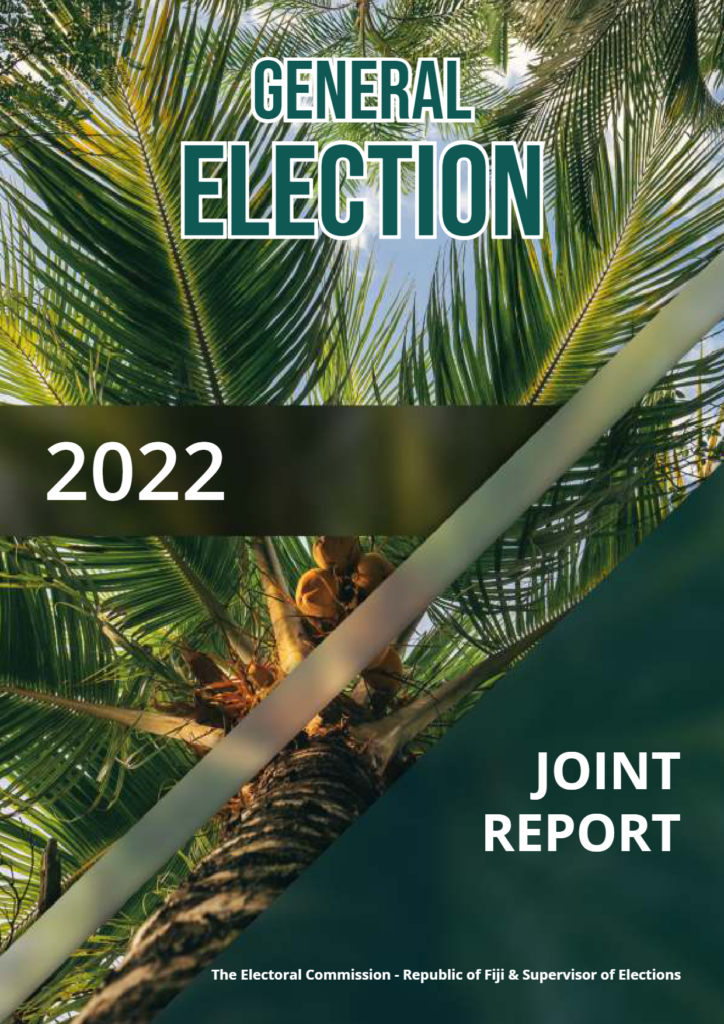Fijian Electoral System
Fiji uses a modified Open List Proportional System to elect its members of parliament. The whole country forms the Constituency and voting is not compulsory. The voting age is 18 years and registration of voters closes at 6pm on the day the Writ for the General Election is issued by the President.
Registration process is open throughout the electoral cycle and voters are regularly encouraged by the FEO to update their details. The FEO has opened Voter Service Centres [‘VSC’s’] in major centres to facilitate the need.
Various voter engagement exercises take place as well to ensure that voters have access to the FEO services.
Upon registration, the voter receives a VoterCard. VoterCards have become a universal source of ID in Fiji and this in turn promotes the voter to keep their cards safe and up to date.
Nomination of candidates to the election is to be submitted to the SoE. Nominations are in the form of Party Lists for candidates of political parties while independent candidates nominate individually. Parties rank their candidates in order of preference at the time of nomination, however, the final order of the candidates is determined by the total number of votes they received at the election. Parties can only nominate as many candidates as the total seats in Parliament.
A day is set aside as Election Day and is usually a public holiday. Voters are assigned a polling venue of their choice at the time of registration and they can only vote at the assigned polling venue. Venues that have more than 500 voters are divided into polling stations so as not to exceed 500 as the maximum number of voters at any polling station.
The FEO conducts voting in remote areas such as the highlands and the islands in the week before the week (in which the election day falls) the General Election is to take place. Postal voting is available to anyone who may not be able to attend their polling station on Election Day.
All candidates at the election are allocated a randomly drawn three (3) digit number. The draw is done publicly by the SoE. The ballot paper only has numbers and in-order to vote, a voter is required to either circle or tick or cross the number of the candidate they wish to vote for. The FEO provides voters with a Voter Instruction Booklet that contains the list of all the candidates and their numbers.
Voting is by ballot and each voter receives only one (1) ballot paper. In the event the voter makes a mistake on their ballot paper, they are entitled to one (1) replacement ballot paper only. Voting is from 7.30am to 6pm and voters can choose to attend at any time in between to vote. Assistance is provided by Election Officials to illiterate voters while persons with disability can choose to be assisted by a person of their own choice who must be a registered voter.
After the close of the voting at 6pm on Election Day and after all voters in the queue have voted, the Presiding Officer at the polling station will initiate the Counting process. Counting of votes on Election Day are done at the polling station and results are transmitted, first by phone and then by the official protocol of results to the National Results Centre in Suva. After 6pm on Election Day, the Pre-poll and the Postal votes are counted at the National Count Centre in Suva.
The FEO publishes election results in real time on Election night through its website and a specially designed results application for mobile phones. The results on the night are provisional in nature and the FEO stops provisional result announcement at 7am the day after the election.
Thereafter, the FEO compiles the final results directly from the protocol of results and publishes it. Once all the results are received, the FEO prepares the Final National Results Tally and hands it over to the EC for the allocation of seats. The Final National Results Tally contains candidates listed in descending order of votes by party.


